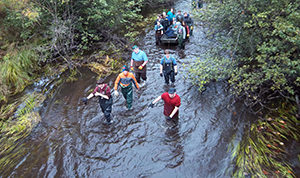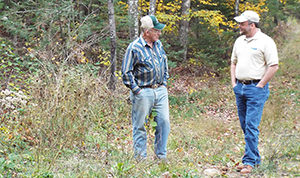Locally Led Conservation

Conservation: Ben Schram
Conservation Districts are poised to make an impact
Natural resources affect all Americans differently. Whether rural, urban, or suburban, each resident uniquely interacts with the natural environment.
Often, federal and state-level political priorities dictate conservation efforts. Especially in the current climate of political uncertainty, locally led conservation is going to have the greatest impact on our natural resource; not only because it can. It must.
 Conservation Districts (aka Soil and Water Conservation Districts, Soil Conservation Districts) set local conservation priorities. Residents directly impact which problems they try to solve. They also provide residents with local assistance for natural resource concerns. These local, special purpose units of government work daily to address the conservation issues that have direct impact on their community.
Conservation Districts (aka Soil and Water Conservation Districts, Soil Conservation Districts) set local conservation priorities. Residents directly impact which problems they try to solve. They also provide residents with local assistance for natural resource concerns. These local, special purpose units of government work daily to address the conservation issues that have direct impact on their community.
Here are three reasons Conservation Districts will make an impact in 2017 and beyond.
- Locally led. At its core, a Conservation District (CD) is comprised of board directors that are elected from the community. Directors represent local natural resource interests; farmers, ranchers, woodland owners, etc. Each CD conducts a Resource Assessment; residents are surveyed to determine the conservation issues that matter and should be pursued locally. If grazing is a concern but nutrient application isn’t, then focus on the herd. If your district is dominated by forests, they might emphasize forest health in programs and outreach.
- Many CD offices are co-located with the USDA Natural Resources Conservation Service and Farm Service Agency. That means easy access to programs like the Environmental Quality Incentives Program or the Conservation Reserve Program. Even if a CD maintains its own office, they can still help landowners access federal Farm Bill programs for conservation financial and technical assistance. Districts are also experts at building partnerships with NGOs. Working with groups like the Ruffed Grouse Society, Quality Deer Management Association, Audubon Society, and the Sage Grouse Initiative make pursuing shared outcomes more efficient and effective.
- Technical expertise. Districts employ a variety of natural resource professionals to help residents address different types of land. In the stable are foresters, agriculture technicians, wildlife biologists, environmental engineers, and watershed experts. Technical expertise might vary from state to state, or even district to district, but your local team can help put you in contact with the right person for the job.
Today, there are more than 3,000 Conservation Districts throughout the United States. The National Association of Conservation Districts provides a national voice for Districts to influence federal policies and funding for conservation programs. They also provide support for state-level associations.
Whether you’re a farmer, rancher, forest owner, or otherwise everyday citizen, it’s easy to become involved in conservation. Global issues are, at their core, local issues. Reach out to your Conservation District to learn about how you can make a global impact in your own backyard.
Conservation Districts exist throughout the country. Visit www.nacdnet.org to find your local Conservation District. At the website, you’ll also learn about a variety of partnerships focusing on special projects nationwide.
Ben Schram is making a career in conservation, with special emphasis on forests. He lives in Michigan with his wife and German wirehaired pointers. Ben can be reached at benschram35@gmail.com

